Clancy Tucker's Blog, page 264
March 23, 2015
24 March 2015 - WORLD CHILDREN'S FESTIVAL 2015

WORLD CHILDREN'S FESTIVAL 2015
G'day folks,
I was recently invited to participate in this event by a good friend, Dr. Ashfaq Ishaq, who happens to be the event producer and also Chairman of the International Child Art Foundation. Sadly, I had to decline, but I wanted to bring this event to your notice. As an advocate for kids, I'm always supportive of events that bring kids together, especially when it relates to artistic pursuits. So, visit this wonderful festival if you are in or near Washington DC between June 30 and July 4. I'm sure you will be pleasantly surprised and entertained.
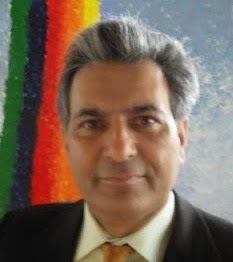
BACKGROUND
This is your World Festival! The “Olympics” of your imagination and co-creation. You meet kids from around the world, participate in workshops and activities, broaden your talents and sharpen your creative expressions. It’s a fun learning experience. You come to know your world, make new friends, and learn new things.
Your WCF2015 will take place in Washington from June 30th to July 4th. On Tuesday, June 30th the WCF opens at 10:00 am at The Ellipse—“President’s Park” south of The White House. You are welcome and you can bring friends and family members along. You will all enjoy a full day of performances and activities until 7:00 pm.
Each day’s educational focus is different: June 30th is Health & Environment Day, July 1st is Creativity & Imagination Day, and July 2nd is Peace & Leadership Day. On July 1st the WCF also opens at 10:00 am and closes at 7:00 pm. On July 2nd the WCF opens at 10:00 but closes at 5:00 pm, with a drumming ceremony.
We believe that it takes but a single generation to upend world’s history of violence and poverty, and that our children belong to a creative generation ready to bring about lasting peace and widespread prosperity. But they need your guidance and support. The World Children’s Festival 2015 provides you that window of opportunity.

Launched in 1999 as the “Olympics” of children’s imagination, the World Children’s Festival (WCF) has grown into the world’s premier children’s celebration and a permanent quadrennial event in our nation’s capital.
The WCF brings together some of the most imaginative children in the world and provides them a transformative experience so they become the new makers and creators, inspired to work together and create a brighter future for all.
The official delegates are selected through the Arts Olympiad,the world’s largest children’s art program. The U.S. Olympic Committee has granted the International Child Art Foundation (ICAF) an exclusive license to use the “Arts Olympiad” mark. The Arts Olympiad winners representing their U.S. states and over 70 other countries convene at the WCF, along with amazing young musicians and performers selected to represent world cultures.

The WCF2015 opens on June 30th with a three-day public celebration at The Ellipse next to The White House. The WCF workshops are based on STEAMS Education—the ICAF’s pioneering approach to integrate STEM disciplines with art and culture (signified by the "A") and sport and play (the "S") for children's holistic development. Sequencing of the intervention at the WCF is based on the ICAF’s Peace through Art Methodology, published in the medical journal The Lancet
June 30th - Health & Environment Day
July 1st - Creativity & Imagination Day
July 2nd - Peace & Leadership Day
In a setting of global community, the production and exhibition of children’s amazing works, the electrifying performances by young musicians and dancers, the coproduction of peace murals by professional artists and children from conflict zones, and the workshops by international educators will collectively create a synesthetic experience—a total work of art and a global celebration of “Creativity, Diversity, and Unity.”
Schedule
Tuesday, June 30th 10:00 am to 10:45 am WCF2015 Opening Ceremony: Health & Environment Day
11:00 am to 7:00 pm STEAMS workshops/activities and multicultural performances
Wednesday, July 1st 10:00 am to 10:45 am Opening Ceremony: Creativity & Imagination Day
11:00 am to 7:00 pm STEAMS workshops/activities and multicultural performances
Thursday, July 2nd 10:00 am to 10:45 am Opening Ceremony: Peace & Leadership Day
11:00 am to 4:30 pm STEAMS workshops/activities and multicultural performances
4:30 pm to 5:00 pm WCF Public Event Closing Ceremony
Friday, July 3rd 6:00 pm to 10:00 pm 5th World Children’s Awards Banquet (private event)
Saturday, July 4th 11:00 am to 8:00 pm U.S. Independence Day celebrations at The National Mall


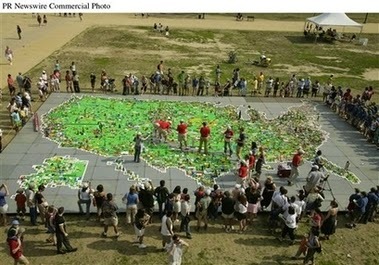

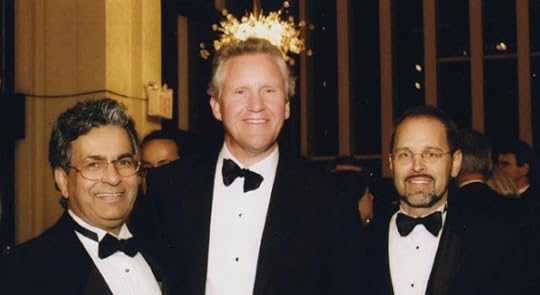


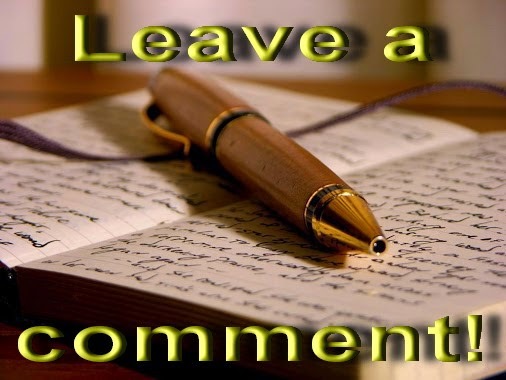
Clancy's comment: Other than the provision of food, water and shelter, it is my belief that every child deserves to reach their full potential. This is a great way to encourage kids to do exactly that, and more strength to the organisers. Well done!
I'm...


Published on March 23, 2015 04:16
March 22, 2015
23 March 2015 - INNOVATIONS THAT CHANGED HISTORY

INNOVATIONS THAT CHANGED HISTORY
G'day folks,
Ever wondered how and why certain modern day conveniences were invented? I sure have.
Whether it’s early man’s first use of fire or the birth of the space shuttle, innovations have always been the major catalysts behind humankind’s success. Some of these breakthroughs brought about immediate change, while others humbly laid the groundwork for important developments down the road. From pioneering inventions to bold scientific and medical advancements, find out more about 11 innovations that changed the course of human history.

THE PRINTING PRESS
Prior to the rise of the Internet, no innovation did more for the spread and democratization of knowledge than Johannes Gutenberg’s printing press. Developed around 1440 in Mainz, Germany, Gutenberg’s machine improved on already existing presses through the use of a mould that allowed for the rapid production of lead alloy type pieces. This assembly line method of copying books enabled a single printing press to create as many as 3,600 pages per day. By 1500 over 1,000 Gutenberg presses were operating in Europe, and by 1600 they had created over 200 million new books. The printing press not only made books affordable for the lower classes, but it helped spark the Age of Enlightenment and facilitated the spread of new and often controversial ideas. In 1518 followers of the German monk Martin Luther used the printing press to copy and disseminate his seminal work “The Ninety-Five Theses,” which jumpstarted the Protestant Reformation and spurred conflicts like the Thirty Years’ War (1618-48). The printing press proved so influential in prompting revolutions, religious upheaval and scientific thought that Mark Twain would later write, “What the world is today, good and bad, it owes to Gutenberg.”

THE COMPASS
Magnetic compasses may have been made somewhat obsolete by satellites and global positioning systems, but their impact on early navigation and exploration was inestimable. Originally invented in China, by the 14th century compasses had widely replaced astronomical means as the primary navigational instrument for mariners. The compass provided explorers with a reliable method for traversing the world’s oceans, a breakthrough that ignited the Age of Discovery and won Europe the wealth and power that later fueled the Industrial Revolution. Most importantly, the compass allowed for interaction—both peaceful and otherwise—between previously isolated world cultures.

PAPER CURRENCY
Throughout much of human history, money took the form of precious metals, coins and even raw materials like livestock or vegetables. The inception of paper money ushered in a bold new era—a world in which currency could purchase goods and services despite having no intrinsic value. Paper currency was widely used in China in the ninth century, but did not appear in Europe until the late 1600s. Spurred on by frequent shortages of coins, banks issued paper notes as a promise against future payments of precious metals. By the late 19th century many nations had begun issuing government-backed legal tender that could no longer be converted into gold or silver. The switch to paper money not only bailed out struggling governments during times of crisis—as it did for the United States during the Civil War—but it also ushered in a new era of international monetary regulation that changed the face of global economics. Perhaps even more importantly, paper currency was the vital first step in a new monetary system that led to the birth of credit cards and electronic banking.

STEEL
While early human societies made extensive use of stone, bronze and iron, it was steel that fuelled the Industrial Revolution and built modern cities. Evidence of steel tools dates back 4,000 years, but the alloy was not mass-produced until the invention of the Bessemer Process, a technique for creating steel using molten pig iron, in the 1850s. Steel then exploded into one of the biggest industries on the planet and was used in the creation of everything from bridges and railroads to skyscrapers and engines. It proved particularly influential in North America, where massive iron ore deposits helped the United States become one of the world’s biggest economies.

THE ELECTRIC LIGHT
While they are easy to take for granted, all it takes is a short power outage to remind us of the importance of artificial lights. Pioneered in the early 19th century by Humphry Davy and his carbon arc lamp, electric lights developed throughout the 1800s thanks to the efforts of inventors like Warren de la Rue, Joseph Wilson Swan and Thomas Alva Edison. It was Edison and Swan who patented the first long-lasting light bulbs in 1879 and 1880, liberating society from a near-total reliance on daylight. Electric lights went on to be used in everything from home lighting and street lamps to flashlights and car headlights. The complex networks of wires erected to power early light bulbs also helped lead to the first domestic electrical wiring, paving the way for countless other in-home appliances.

DOMESTICATION OF THE HORSE
Since their domestication some 5,500 years ago, horses have been inextricably tied to human development. They enabled people to travel great distances and gave different cultures the chance to trade and exchange ideas and technology. Equine strength and agility meant that horses could also carry cargo, plow farmland and even clear forests. Perhaps most influential of all, horses changed the nature of war. Nothing was more feared than a horse-drawn chariot or a mounted warrior, and societies that mastered the use of cavalry typically prevailed in battle.

TRANSISTORS
A criminally underappreciated innovation, the transistor is an essential component in nearly every modern electronic gadget. First developed in 1947 by Bell Laboratories, these tiny semiconductor devices allow for precise control of the amount and flow of current through circuit boards. Originally used in radios, transistors have since become an elemental piece of the circuitry in countless electronic devices including televisions, cell phones and computers. The amount of transistors in integrated circuits doubles nearly every two years—a phenomenon known as Moore’s Law—so their remarkable impact on technology will only continue to grow.

MAGNIFYING LENSES
Magnifying lenses might seem like an unremarkable invention, but their use has offered mankind a glimpse of everything from distant stars and galaxies to the minute workings of living cells. Lenses first came into use in the 13th century as an aid for the weak-sighted, and the first microscopes and telescopes followed in the late 16th and early 17th centuries. Figures like Robert Hook and Anton van Leeuwenhoek would go on to use microscopes in the early observance of cells and other particles, while Galileo Galilei and Johannes Kepler employed the telescope to chart Earth’s place in the cosmos. These early uses were the first steps in the development of astonishing devices like the electron microscope and the Hubble Space Telescope. Magnifying lenses have since led to new breakthroughs in an abundance of fields including astronomy, biology, archaeology, optometry and surgery.
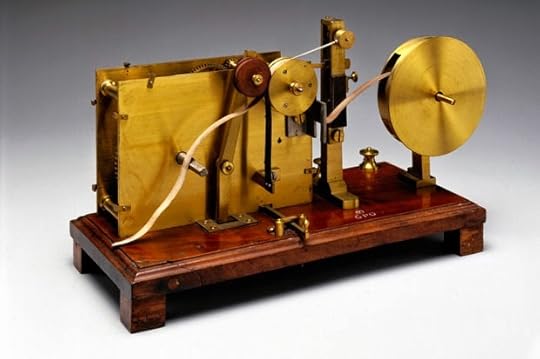
THE TELEGRAPH
The telegraph was the first in a long line of communications breakthroughs that later included radio, telephones and email. Pioneered by a variety of inventors in the 18th and 19th centuries, the telegraph used Samuel Morse’s famous Morse code to convey messages by intermittently stopping the flow of electricity along communications wires. Telegraph lines multiplied throughout the 1850s, and by 1902 transoceanic cables encircled the globe. The original telegraph and its wireless successors went on to be the first major advancements in worldwide communication. The ability to send messages rapidly across great distances made an indelible impact on government, trade, banking, industry, warfare and news media, and formed the bedrock of the information age.
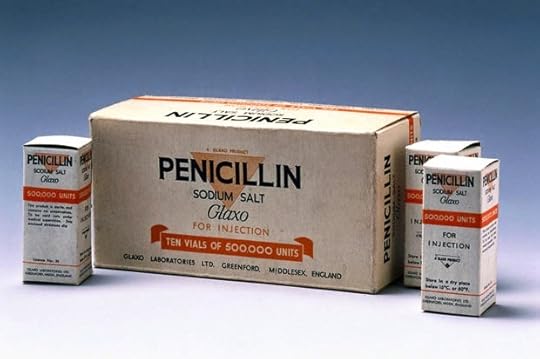
ANTIBIOTICS
A giant step forward in the field of medicine, antibiotics saved millions of lives by killing and preventing the growth of harmful bacteria. Scientists like Louis Pasteur and Joseph Lister were the first to recognize and attempt to combat bacteria, but it was Alexander Fleming who made the first leap in antibiotics when he accidentally discovered the bacteria-inhibiting mold known as penicillin in 1928. Antibiotics proved to be a major improvement on antiseptics—which killed human cells along with bacteria—and their use spread rapidly throughout the 20th century. Nowhere was their effect more apparent than on the battlefield: While nearly 20 percent of soldiers who contracted bacterial pneumonia died in World War I, with antibiotics that number dropped to only 1 percent during World War II. Antibiotics like penicillin, vancomycin, cephalosporin and streptomycin have gone on to fight nearly every known form of infection, including influenza, malaria, meningitis, tuberculosis and most sexually transmitted diseases.

THE STEAM ENGINE
Cars, airplanes, factories, trains, spacecraft—none of these transportation methods would have been possible if not for the early breakthrough of the steam engine. The first practical use of external combustion dates back to 1698, when Thomas Savery developed a steam-powered water pump. Steam engines were then perfected in the late 1700s by James Watt, and went on to fuel one of the most momentous technological leaps in human history during the Industrial Revolution. Throughout the 1800s external combustion allowed for exponential improvement in transportation, agriculture and manufacturing, and also powered the rise of world superpowers like Great Britain and the United States. Most important of all, the steam engine’s basic principle of energy-into-motion set the stage for later innovations like internal combustion engines and jet turbines, which prompted the rise of cars and aircraft during the 20th century.

Clancy's comment: Wow. I'm certainly glad about a few of these. How would we survive today without them? Then again, might be a nice change to live like a caveman.
I'm ...


Published on March 22, 2015 02:19
March 21, 2015
22 March 2015 - MORE WISDOM

MORE WISDOM
G'day folks,Welcome to some more wise tips and subtle quips.


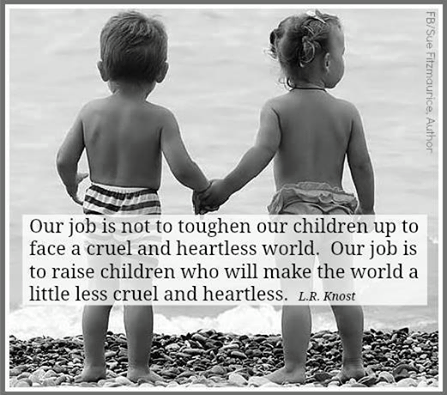
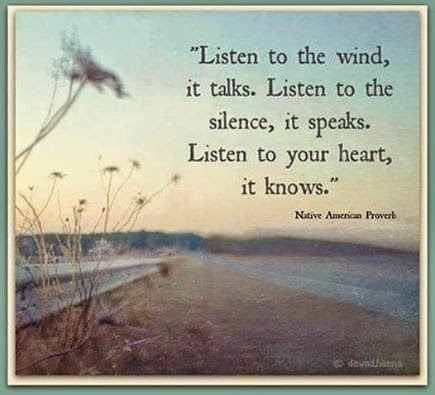
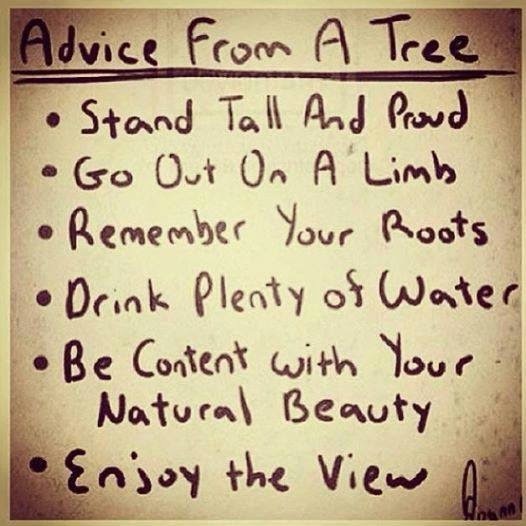

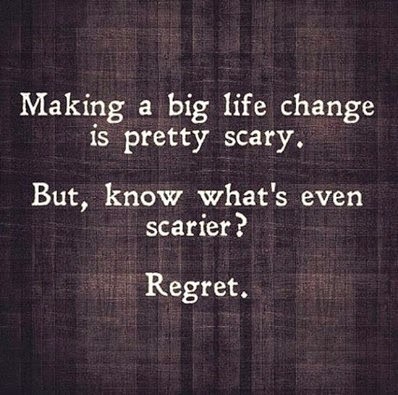
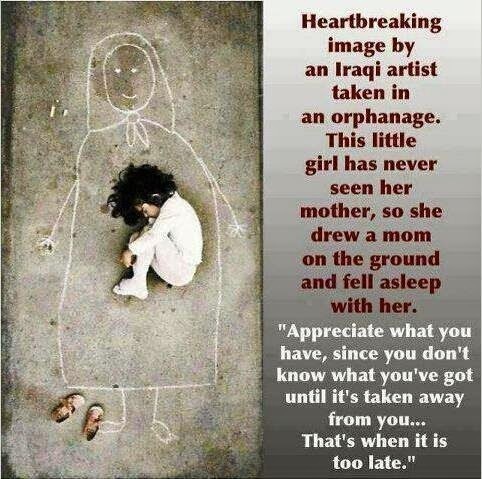

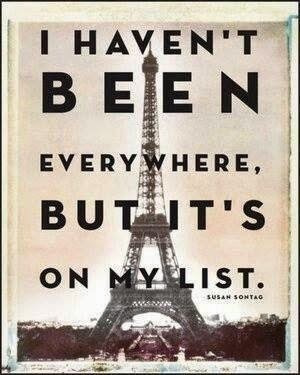
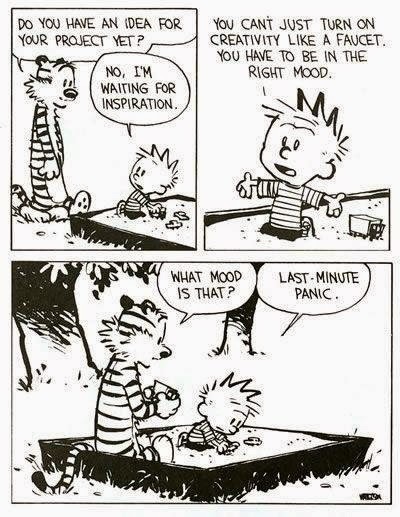
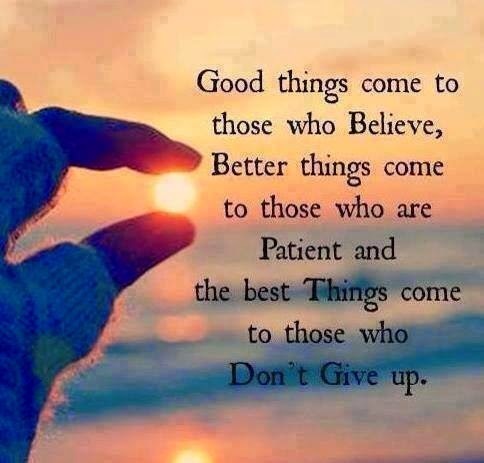

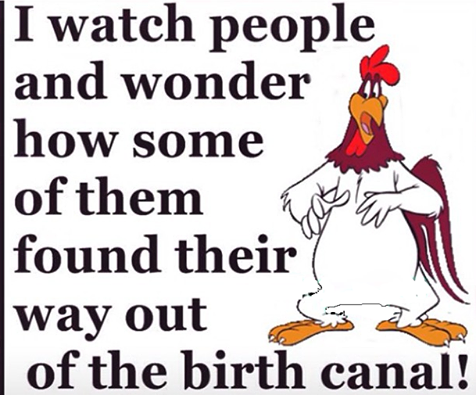
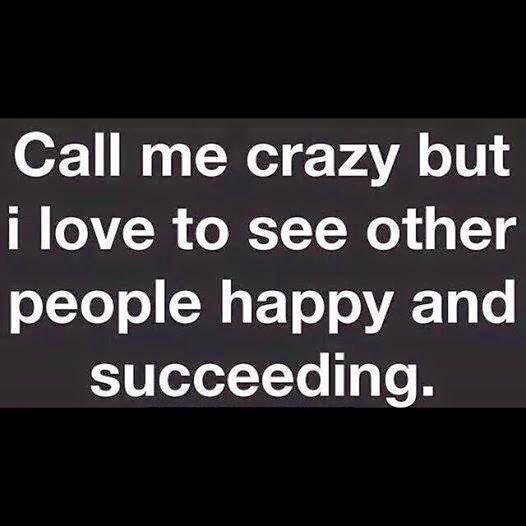
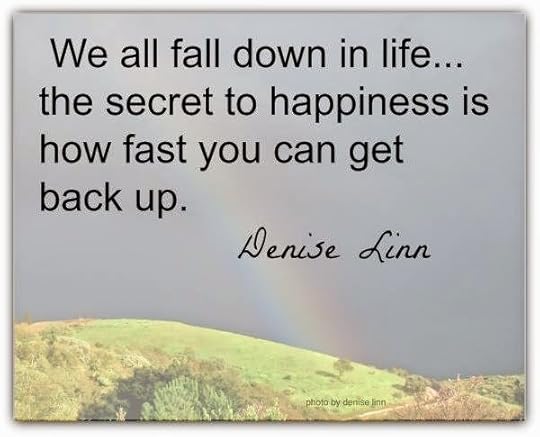


Clancy's comment: Some of these made me chuckle. What about you?
I'm ...


Published on March 21, 2015 02:34
March 20, 2015
21 March 2015 - ALAN BLACK - Guest Author
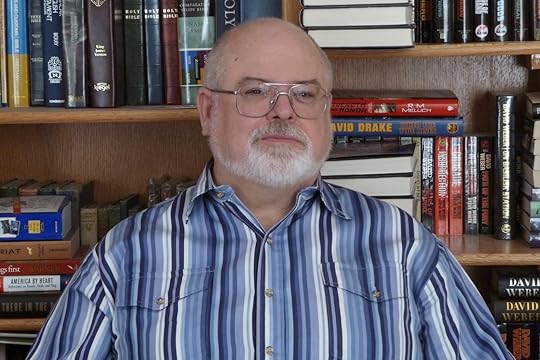
ALAN BLACK
- Guest Author -G'day folks,
Welcome to an interview conducted with another American author.
Welcome, Alan ...
1. TELL US A LITTLE ABOUT YOURSELF AND YOUR WRITING JOURNEY.
I am a full time writer devoting 50 - 80 hours a week on writing, rewriting and marketing my books. Fortunately, this is something that I can do from home, so I work (mostly) in my jammies. I will admit that I put on pants when I go out to do a book signing or a speaking engagement.
I am in the middle of editing a new military scifi novel Empty Space . It is about a young man who is screwed by the very military he has sworn to obey. Disgraced and discarded, the military will soon learn they screwed with the wrong guy. I am also doing a major rewrite on a historical fiction novel The Stolen Prize . It is set in 751CE in and around the Black Sea. Mutiny, murder, and revenge! Plus, (whew!) I have started to write a sequel to my #1 bestselling novel Metal Boxes .
I have 9 books available on Amazon. I believe that word of mouth is the best advertisement possible, but I have to make my books known or they don’t have anything to talk able. So, I promote all 9 all the time.
My business plan gives our vision statement as “We want our readers amazed they missed sleep because they could not put down one of our books. We want our readers amazed we made them laugh on one page and cry on the next. We want to give our readers a pleasurable respite from the cares of the world for a few hours. We want to offer stories we would want to read.”
Our Mission statement sums up why I write what I write. “Our business is to write top notch imaginative novels of all genres to capture a reader’s attention and enjoyment. We will cater to readers of all ages. We will work to stimulate readers and authors to greater imaginative efforts.”
2. WHEN AND HOW DID YOU BECOME A WRITER?
I started the first novel I completed in 1996. It took me 2 years to finish. I didn’t start writing full time until February 2014.
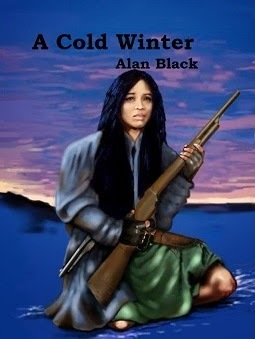
3. WHAT TYPE OF PREPARATION DO YOU DO FOR A MANUSCRIPT? DO YOU PLAN EVERYTHING FIRST OR JUST SHOOT FROM THE HIP?
I started my first novel with an extensive outline. That is what I had been taught. I had been told that was the only way. About halfway through the book, I couldn’t make the story follow the outline anymore and I caught myself spending more time updating the outline than I did writing the story, so I threw the outline away. Now, I know where I am going to start, where I want to go and about how long I want to take to get there. Then I pants it the whole way through.
4. WHAT DO YOU ENJOY MOST ABOUT BEING A WRITER?
Remember from above? The no pants thing?
5. WHAT IS THE HARDEST THING ABOUT BEING A WRITER?
Finding the time to write. Seriously.
6. WHAT WERE YOU IN A PAST LIFE, BEFORE YOU BECAME A WRITER?
I have done...um...a lot: I have been a busboy, dishwasher, daily farm laborer, line cook, barback, radio communications analysis as an Air Force vet, insurance salesman, used car salesman, HVAC assistant, turd wrangles assistant, bill collector, car repoman, meat cutter, grocery clerk, business news reported, purchasing agent, and telephone customer service representative
7. WHAT IS YOUR GREATEST WRITING ACHIEVEMENT?
One of my scifi books Metal Boxes hit #1 on Amazon.
8. WHAT ARE YOU WORKING ON AT THE MOMENT?
Empty Space is my next published book should be out in March of 2015. It has a main character that is a bit different for me. He is a young man, abandoned to a government orphanage, abused and molested, forced into the military, and then stabbed in the back by the system that was supposed to protect him. He is also a sociopathic serial killer.
Strictly speaking it is military scifi.
9. WHAT INSPIRES YOU?
I get my ideas from the same place that every author does. There is a big book in the library with every unused story idea. All you have to do is go select one. Then you show the librarian the idea you selected and s/he marks it off so no one else uses it.
Actually, ideas come from everywhere and anywhere. Newspapers, television commercials, conversations in elevators and even from watching clouds while taking a long walk.
10. WHAT GENRE DO YOU WRITE?
I am uni-genre-phobic. I have already published 4 scifi, 1 western, 1 contemporary action/adventure and 3 Christian fiction set in 1920 Ozark Mountains. I have 9 more books that are unpublished and awaiting their turn in the editing/formatting/cover generation pipeline. 3 are scifi, 3 are Christian fiction set in 1925 Ozark Mountains, 1 is The Stolen Prize (as mentioned above), 1 is a western and 1 is a non-fiction how-to book.
Having said that, they are not as far apart in genre as they sound. The location changes, not the type of story.
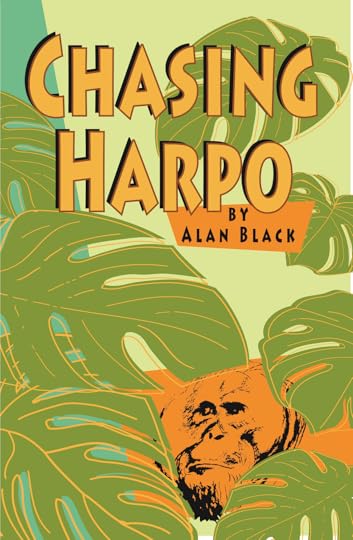
11. DO YOU HAVE ANY TIPS FOR NEW WRITERS?
So much advice. So little time.
Two things.
#1 rule of writing fiction: There are no rules to writing. Oh sure, editors have rules, agents have rules, publishers have rules, booksellers have rules, and even readers have rules. But, write what you want and how you want. You will be happier for it, even if you have to make a few changes later to make everyone else happy.
#2 Never quit writing unless your protagonist is in trouble. This will help you avoid writer’s block and help you get back to writing.
12. DO YOU SUFFER FROM WRITER’S BLOCK?
Nope. Because I follow rule #2 from above.
13. DO YOU HAVE A PREFERRED WRITING SCHEDULE?
Nope. As a full time writer, I sit and write whenever there isn’t anything good on television.
14. DO YOU HAVE A FAVOURITE WRITING PLACE?
I have a home office. It is for writing, nothing else. I control distractions and as I said, I can get there without any traffic snarls.
15. WHAT IS YOUR GREATEST JOY IN WRITING?
Finishing a good story.
16. WHO IS YOUR FAVOURITE AUTHOR AND WHY?
Robert Heinlein. His early works are genius and he led a generation of scifi readers into the genre.
17. WHAT’S THE GREATEST COMPLIMENT YOU EVER RECEIVED FROM A READER?
I had a reviewer say the following: “ The Friendship Stones by Alan Black is one of the most beautifully written tales I have ever read, part historical fiction, part inspirational reading, part coming of age, told through the mind and heart of a twelve-year-old girl, the innocence of youth and the times shines through like a glittering diamond.”
Really! I cut this from her review on Amazon. She is also one of Amazon’s Top Reviewers. Really! I didn’t pay her or nothing like that. I haven’t even met the woman. Honest.

Alan Black took me to a time and place I have never been to and yet, I could see it plainly in my mind, the simple joys of life and giving and being happy with what one has, while struggling to survive. Let go of your mind’s control and you will experience the dusty roads, the rocky fields and poverty that is all these people have known. There is no fast action, no great adventure, no thunderous preaching, just a journey that can be savored and reveled in through the eyes and heart of young LillieBeth.
Had I missed reading The Friendship Stones I would have missed some of the magic of books.
18. WHAT WAS THE WORST COMMENT FROM A READER?
I had a review give me a one star review on Amazon for Metal Boxes, “I thought this was supposed to be sci-fi, not a story about lesbians!” I have read the book 17 times and I can’t find a lesbian anywhere. Not that I have a problem with gay or lesbian, it just ain’t in this book. Makes me wonder where his head was at.
19. WRITERS ARE SOMETIMES INFLUENCED BY THINGS THAT HAPPEN IN THEIR OWN LIVES. ARE YOU?
I firmly believe that an author reveals more of him/herself that most are willing to admit. My Ozark Mountain Series ( The Friendship Stones , The Granite Heart , & The Heaviest Rock ) all leans very heavily on the memories of my 84-year-old co-author Bernice Knight. That was the initial point of the books in the first place. We took her memories and fictionalized them, twisting in other fictional elements as there were things she wanted to share, but didn’t want her great grandchildren to read that some of the really nasty things had actually happened.
That series was specifically designed to fictionalize factual occurrences. However, even the most bizarre science fiction must have something from my past that I can relate to. If I cannot relate to the story on an emotional level, how can I expect my readers to feel that emotion?
20. OTHER THAN WRITING, WHAT ELSE DO YOU LOVE?
Reading
Movies
Eating
My wife of almost 38 years.
21. DID YOU HAVE YOUR BOOK / BOOKS PROFESSIONALLY EDITED BEFORE PUBLICATION?
Nope. I am fortunate in that my wife does it for me.
22. DESCRIBE YOUR PERFECT DAY.
I’ll let you know when it happens.
23. IF YOU WERE STUCK ON A DESERT ISLAND WITH ONE PERSON, WHO WOULD IT BE? WHY?
My wife. Not only is she my best friend, but she is an expert in survival, having taught escape and evasion to pilots in the Air Force. She can’t cook worth a damn, but she sure could find me something that I could kill, gut and cook.
24. WHAT WOULD YOU SAY IF YOU HAD THE CHANCE TO SPEAK TO WORLD LEADERS?
Take a course in how to listen. Really! Learn to listen more and talk less.
25. WHAT ARE YOUR PLANS FOR THE FUTURE?
I have 9 books on the shelf that need publishing. After that? Well, I have more books to write.
26. WHAT FIVE BOOKS WOULD YOU TAKE TO HEAVEN?
The Bible
Young’s Concordance
Bullinger’s Figures of Speech
Bullinger’s Witness of the Stars
And any Dr. Suess book ever written.

27. DO YOU SEE YOURSELF IN ANY OF YOUR CHARACTERS?
I see myself in all of my characters. In fact, I write myself into a lot of my books. You can spot me because I am the short, fat, bald old man with glasses. Every book needs a character that looks like me.
28. DOES THE PUBLISHING INDUSTRY FRUSTRATE YOU?
Dear God! How could it not? We are in the middle of an industry flux. Booksellers are going out of business so fast that readers don’t have anywhere to go. Publishers are dying and merging at an apocalyptic rate. Agents are so worried about new writers that they only want to bring on ‘the sure thing’. And the world’s biggest book seller also sells cans of Dinty Moore Beef Stew and underwear. Writers are criticized for stepping outside of the best selling genre, yet genre catagories are changing and expanding faster than booksellers can keep up.
29. DID YOU EVER THINK OF QUITTING?
Nope. I have the best job in the world.
30. WHAT WAS YOUR FAVOURITE MANUSCRIPT TO WRITE? WHY?
My next one is always my favorite. I know I will never write ‘the great American novel’. That isn’t what I do, nor do I want to. I am an entertainer and I believe that my next book will be entertaining, nothing more than that. I’ve had readers and reviews say how they really ‘got’ my message. Jeez, I didn’t know I had a message.
31. HOW WOULD YOU DEFINE ‘SUCCESS’ AS A WRITER.
It is all about having a fun time at your book launch party. Nothing more than that.
32. WHAT SHOULD READERS WALK AWAY FROM YOUR BOOKS KNOWING? HOW SHOULD THEY FEEL?
I want them to know my name and go buy another of my books.
33. HOW MUCH THOUGHT GOES INTO DESIGNING A BOOK COVER?
A lot more thought should be given to the cover than I ever give it. We all know that we shouldn’t judge a book by its cover, but readers do it every time they buy a book. I pick a picture that I like and send it to my cover designer with the instructions to make the words readable from across the room. Sometimes I succeed. Sometimes I don’t
34. WHAT’S YOUR ULTIMATE DREAM?
Pulitzer?
NY Times Best Seller list?
Nope. I want to see someone laugh out loud when I see them reading one of my books in the airport waiting for a flight.
35. WRITING IS ONE THING. WHAT ABOUT MARKETING YOU, YOUR BOOKS AND YOUR BRAND? ANY THOUGHTS?
I spend about 50% of my time now doing marketing through social media, book signing events, and speaking engagements. It isn’t what writing is all about, but if I want anyone to read what I write, then it must be done.
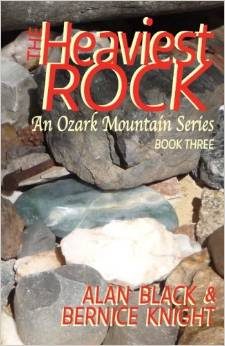
36. ARE YOUR BOOKS SELF-PUBLISHED?
Yes. I published my first three books through a small publisher. It was a horrible experience and when they folded, I had to get lawyers involved to get my books back. I have self published the last 9 and I like the control over my own work.
37. DESCRIBE YOURSELF IN FIVE WORDS.
Short, fat, bald, old, glasses.
Ain’t that the height of sexy?
38. WHAT PISSES YOU OFF MOST?
That is hard to say. I know it covers a multitude of sins but I will just say Human Stupidity.
39. WHAT IS THE TITLE OF THE LAST BOOK YOU READ? GOOD ONE?
You mean besides mine? They are good, honest! Would I lie about that? Okay, as of this morning the last good book was Alexander Outland: Space Pirate by G.J.(Gini) Koch. I laughed until I cried AND wet my pants at the same time. Of course, I’m old, so leaking may be a matter of age. Who knows?
40. WHAT WOULD BE THE VERY LAST SENTENCE YOU’D WRITE?
Bob ran from the building in panic. He knew he couldn’t outrun the—
I plan on going either in my sleep or in the middle of a sentence.
41. WHAT WOULD MAKE YOU HAPPIER THAN YOU ARE NOW? CARE TO SHARE?
Chocolate? Yeah, if I had chocolate right now, I would be happier and I would be glad to share.
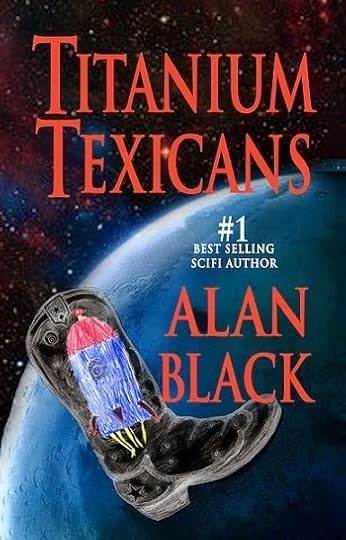
42. ANYTHING YOU’D LIKE TO ADD?
You know, I never really got the hang of adding fractions. I should have paid more attention in the 5th grade. I could add fractions AND I might know what a dangling participle was.

(website)
(facebook)
(twitter)
(Amazon Author Page)

Clancy's comment: Thanks, Alan. Good luck!
I'm ...


Published on March 20, 2015 03:59
March 19, 2015
20 March 2015 - JOE COCKER

JOE COCKER
G'day folks,
Time to say something about one of my favourite singers, who recently died.
Born in England in 1944, Joe Cocker was one of rock's most distinctive singers. He first rose to fame in the late 1960s with his cover of the Beatles' song "With a Little Help From My Friends." Cocker performed at the legendary Woodstock music festival in 1969. The following year, he released the album Mad Dogs & Englishmen, which included such hits as "The Letter." More successful singles soon followed, including "Cry Me a River" and "Feeling Alright." Cocker won a Grammy Award in 1982 for "Up Where We Belong," his duet with Jennifer Warnes. Some of his later albums include Hard Knocks (2010) and Fire It Up (2012).
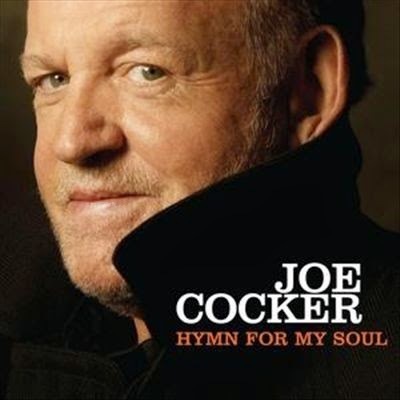
Early Career
Born on May 20, 1944, in Sheffield, England, singer Joe Cocker counted Ray Charles and Lonnie Donegan among his early influences. He made his debut with his brother Victor's skiffle band when he was only 12 years old, according to USA Today. Cocker later became a drummer and harmonica player for a band called the Cavaliers in 1959. Before long, however, Cocker took his position at the front of the stage as a singer. Still he held on to his day job as a gas fitter for the East Midlands Gas Board until he made it as a performer.
Cocker tried his hand at pop music, performing as Vance Arnold for a time before returning to his own name. Cocker had more success working with his back-up group, the Grease Band. He landed a minor hit with "Marjorine" in the late 1960s.

Rock Icon
Cocker landed his first number-one single in his native England in 1968 with his rendition of the Beatles' "With a Little Help From My Friends." His cover of the iconic song was later featured as the theme song for the television series The Wonder Years. His album by the same name featured such guest performers as Jimmy Page and Steve Winwood. The following year, Cocker hit the British charts again with "Delta Lady." This rough yet soulful singer also toured the United States that same year. His time in America included a career-boosting performance at the famed Woodstock music festival. Cocker started to attract a quite following with his bluesy rock sound. He also became known for his unpredictable way of dancing on stage.
With 1970's Mad Dogs & Englishmen, Cocker rose to the top 10 of American pop charts with "The Letter." The album proved to be a huge success and also included several other hits such as "Cry Me a River." Over the next few years, he made the charts a few more times with such songs as "High Time We Went" and "Feeling Alright." As the 1970s progressed, however, Cocker's substance abuse began to affect his performances. He did, however, manage to make it back into the charts with "You Are So Beautiful" in 1975.
Cocker had a career renaissance in the 1980s. His duet with Jennifer Warnes, "Up Where We Belong," was the title track for the Richard Gere-Debra Winger drama An Officer and a Gentleman. This ballad became a number-one hit and earned the pair a Grammy Award win for best pop performance by a duo or group with vocal in 1982. At the close of the decade, Cocker returned to the pop charts again with "When the Night Comes."
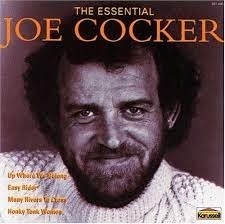
Death and Legacy
Cocker remained active on the music scene in his later years. He kept recording, releasing Hymn for My Soul in 2007 and Hard Knocks in 2010. In 2012, Cocker put out Fire It Up, which proved to be 23rd and final album. He died in Crawford, Colorado, on December 22, 2014. He had been battling lung cancer. The legendary singer was survived by his wife Pam, his stepdaughter Zoey and two grandchildren.
Many members of the music world mourned Cocker's passing. Ringo Starr was just one of people who took to Twitter to express their sadness. He tweeted "Goodbye and God bless to Joe Cocker from one of his friends."
 Clancy's comment: Interesting that he was a gas fitter and Rod Stewart was a grave digger. I guess there is hope for us. Loved ya work, Joe!I'm ...
Clancy's comment: Interesting that he was a gas fitter and Rod Stewart was a grave digger. I guess there is hope for us. Loved ya work, Joe!I'm ...


R.I.P
Published on March 19, 2015 05:10
March 18, 2015
19 March 2015 - SARCASM
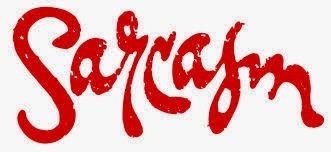
SARCASM
G'day folks,
We have all heard or made a sarcastic comment at some stage in our life. Well, I'm sure some folks are experts. Here are some samples.
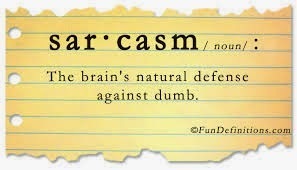
· You are not as bad as people say, you are much, much worse.
· Now we know why some animals eat their own children.
· Please, keep talking. I always yawn when I am interested.
· Talk is cheap, but that's ok, so are you.
· If we killed everybody who hates you, it wouldn't be murder. It would be an apocalypse!
· This is an excellent time for you to become a missing person.
· I'm busy now. Can I ignore you some other time?
· When I look into your eyes, I see straight through to the back of your head.
· A sharp tongue does not mean you have a keen mind.
· Anyone who told you to be yourself couldn't have given you any worse advice.
· Are you always this stupid or are you making a special effort today.
· Do you want me to accept you as you are, or do you want me to lie to myself and try to like you?
· Don't let your mind wander, it's far too small to be let out on its own.
· Don't thank me for insulting you, it was a pleasure.
· Don't you realize that there are enough people to hate in the world already without you putting in so much effort to give us another?
· He always finds himself lost in thought; it's unfamiliar territory.
· I bet you get bullied a lot.
· I can tell that you are lying, your lips are moving.
· I don't know what makes you so dumb but it really works.
· I don't mind you talking so much, as long as you don't mind me not listening.
· I don't think you are a fool, but what's my opinion compared to that of thousands of others.
· I know you are nobody's fool, but maybe someone will adopt you one day.
· I like you. People say I've got no taste, but I like you.
· I used to think that you were a colossal pain in the neck. Now I have a much lower opinion of you.
· I will defend, to your death, my right to my opinion.
· I would have liked to insult you, but the sad truth is that you wouldn't understand me.
· I'd like to see things from your point of view, but I can't seem to get my head that far up your ass.
· If you were twice as smart as you are now, you'd be absolutely stupid.
· I'm glad to see you're not letting your education get in the way of your ignorance.
· I'm impressed, I've never met such a small mind inside such a big head before.
· I've come across rotting bodies that are less offensive than you are.
· Pardon me, but you're obviously mistaking me for someone who gives a damn.
· People would follow him anywhere, but only out of morbid curiosity.
· She's the first in her family born without tail.
· That man is cruelly depriving a village somewhere of an idiot.
· There are several people in this world that I find unbearably obnoxious, and you are all of them.
· What he is lacking in intelligence, he more than makes up for in stupidity.
· Whatever it is that is eating you, it must be suffering horribly.
· What's wrong, don't you get any attention back home?
· You are not even beneath my contempt.
· You are not obnoxious like so many other people, you are obnoxious in a completely different and far worse way.
· You grow on people, but so does cancer.
· You have an inferiority complex and it is fully justified.
· You should do some soul-searching. You might just find one.
· You would never be able to live down to your reputation, but I see you're doing your best.
· Your mind isn't so much twisted as badly sprained.
· You're a habit I'd like to kick - with both feet.

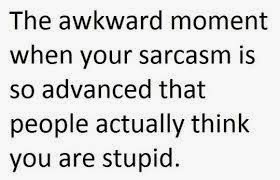

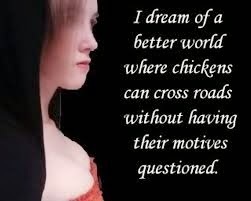
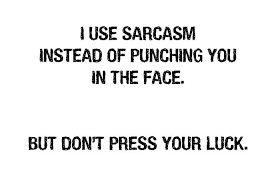
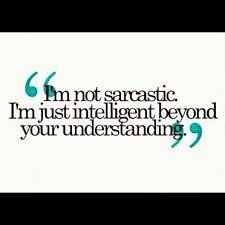
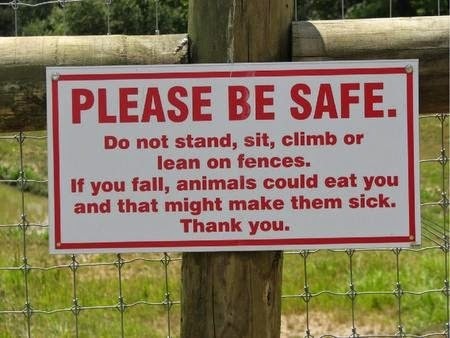
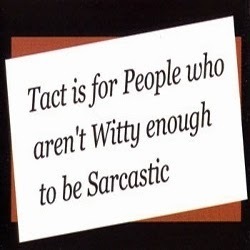
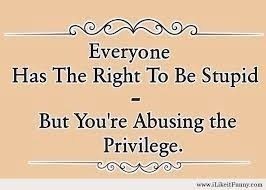
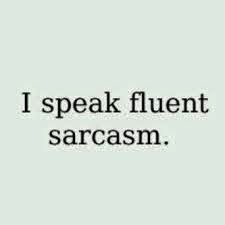
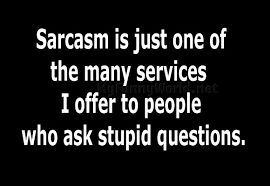
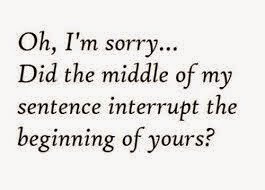




 Clancy's comment: There ya go. Wow, what a collection of snippy comments, eh?I'm ...
Clancy's comment: There ya go. Wow, what a collection of snippy comments, eh?I'm ...
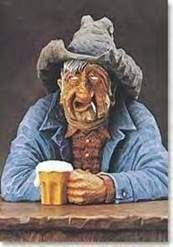

Published on March 18, 2015 05:00
March 17, 2015
18 March 2015 - SQUIRRELS

SQUIRRELS
G'day folks,
Welcome to one of my all time favourite animals. Some animals are quiet and boring. Others, like these guys, are amusing, agile and entertaining. Squirrels are familiar to almost everyone. More than 200 squirrel species live all over the world, with the notable exception of Australia.
The tiniest squirrel is the aptly named African pygmy squirrel—only five inches (thirteen centimeters) long from nose to tail. Others reach sizes shocking to those who are only familiar with common tree squirrels. The Indian giant squirrel is three feet (almost a meter) long.

Like other rodents, squirrels have four front teeth that never stop growing so they don't wear down from the constant gnawing. Tree squirrels are the types most commonly recognized, often seen gracefully scampering and leaping from branch to branch. Other species are ground squirrels that live in burrow or tunnel systems, where some hibernate during the winter season.
Ground squirrels eat nuts, leaves, roots, seeds, and other plants. They also catch and eat small animals, such as insects and caterpillars. These small mammals must always be wary of predators because they are tasty morsels with few natural defenses, save flight. Sometimes groups of ground squirrels work together to warn each other of approaching danger with a whistling call.
Tree squirrels are commonly seen everywhere from woodlands to city parks. Though they are terrific climbers, these squirrels do come to the ground in search of fare such as nuts, acorns, berries, and flowers. They also eat bark, eggs, or baby birds. Tree sap is a delicacy to some species.

Flying squirrels are a third, adaptable type of squirrel. They live something like birds do, in nests or tree holes, and although they do not fly, they can really move across the sky. Flying squirrels glide, extending their arms and legs and coasting through the air from one tree to another. Flaps of skin connecting limbs to body provide a winglike surface. These gliding leaps can exceed 150 feet (46 meters). Flying squirrels eat nuts and fruit, but also catch insects and even baby birds.
Whether they dwell high in a tree or in an underground burrow, female squirrels typically give birth to two to eight offspring. Babies are blind and totally dependent on their mothers for two or three months. Mothers may have several litters in a year, so most squirrel populations are robust.
Now, check out these fabulous shots ...















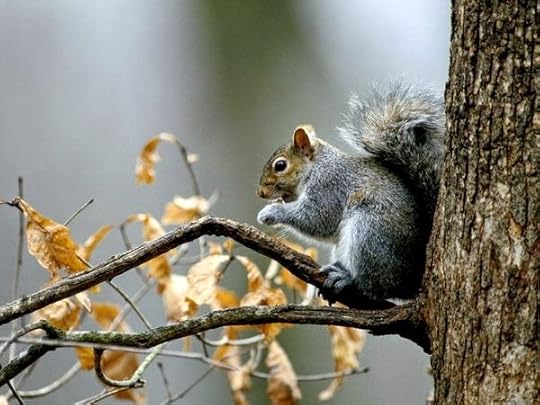





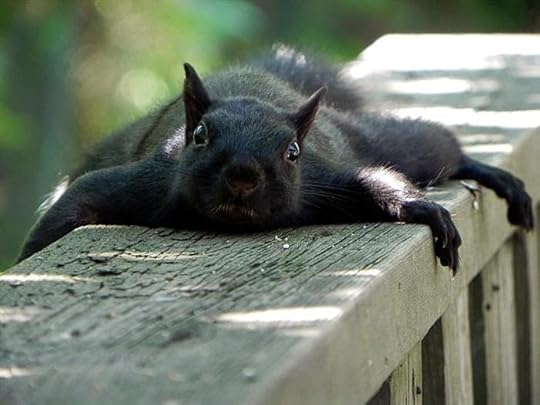


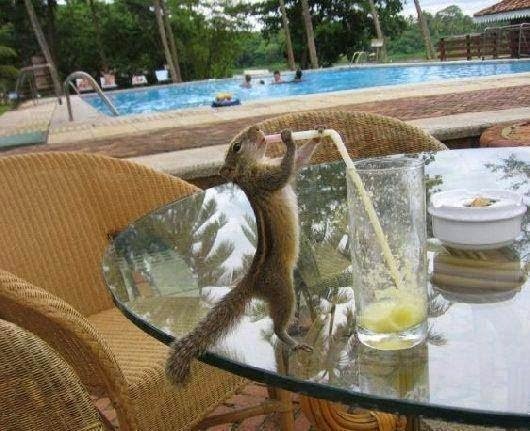
 Clancy's comment: I just love these guys. First time I ever saw one was whilst I was sitting opposite the White House in Washington DC. Since then, I've seen many all over the world. They are fascinating creatures.
Clancy's comment: I just love these guys. First time I ever saw one was whilst I was sitting opposite the White House in Washington DC. Since then, I've seen many all over the world. They are fascinating creatures.I'm ...

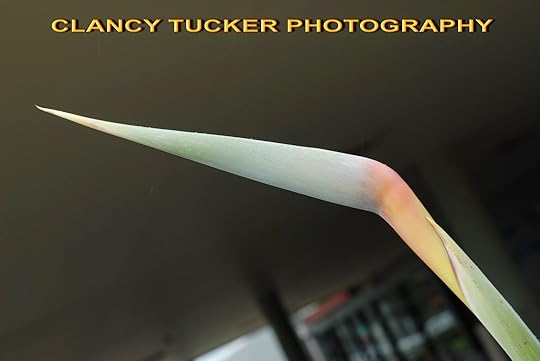
Published on March 17, 2015 04:02
March 16, 2015
17 March 2015 - WEIRD CONSTRUCTIONS

WEIRD CONSTRUCTIONS
G'day folks,
Today, I present some pretty weird stuff. Brace yourself.


















Clancy's comment: Mm ... Which one did you choose for your new house? Oh, by the way, happy Saint Patrick's Day to all of my Irish friends.
I'm ...
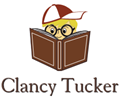

Published on March 16, 2015 04:37
March 15, 2015
16 March 2015 - CLEVER PICTURES

CLEVER PICTURES
G'day folks,
I bet you have all seen some pictures that you wished you'd taken. I sure have. There are many photographers in this world, and sometimes it seems everyone with a mobile phone is a photographer these days. But what makes one a true photographer? Usually, the difference is patience and timing. Ran Maltet was a French photographer and poet, who died a decade ago. He had what seemed to be a natural talent to seize on these split seconds of comedy and philosophy, and capture them on camera. Here are some crackers.







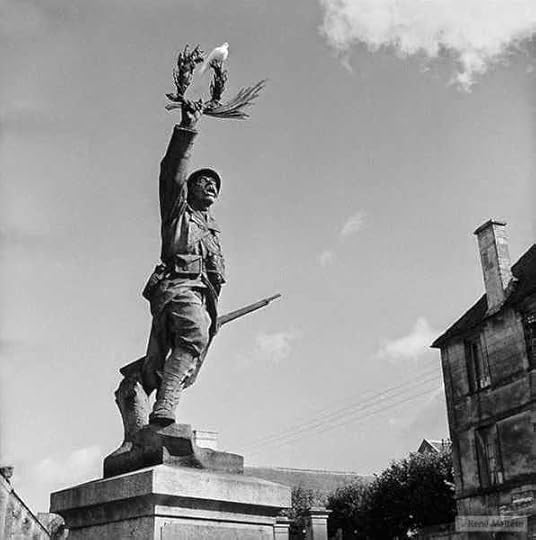
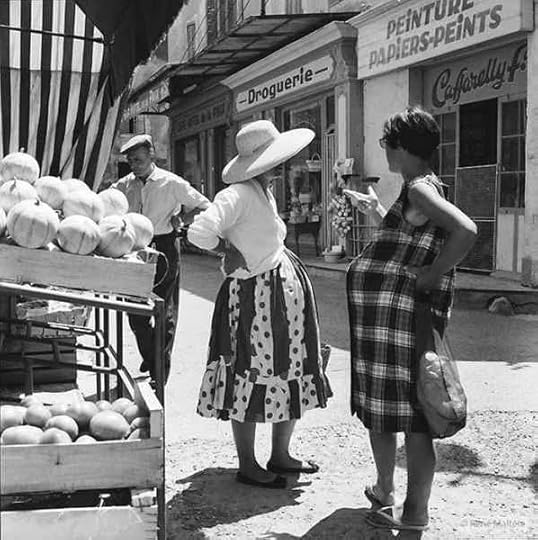




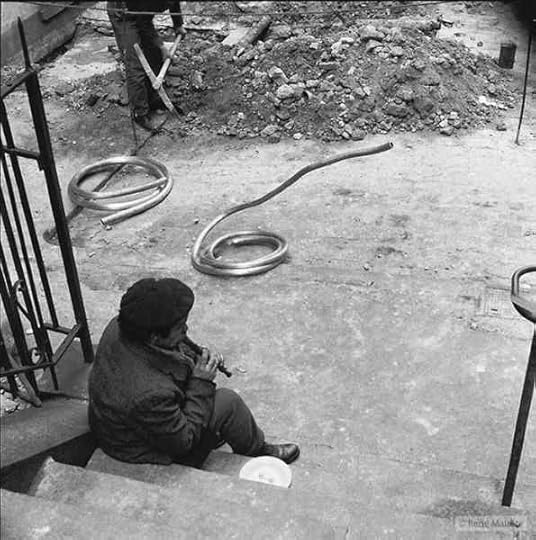
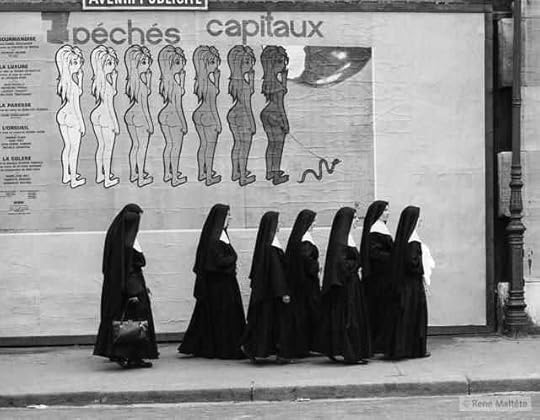






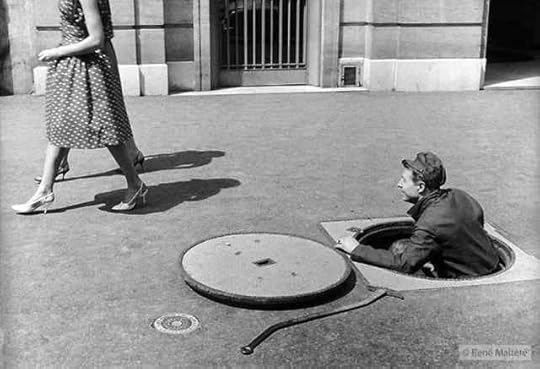
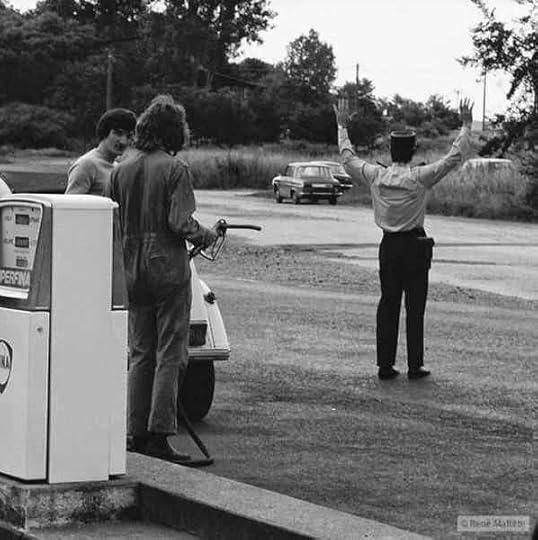

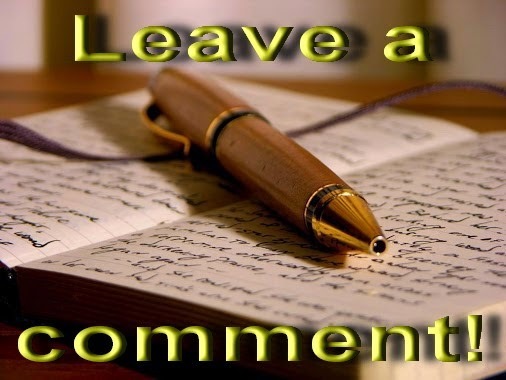
Clancy's comment: Yep, it's all about timing, imagination and pressing the button. Oh, and being in the right spot at the right time. That's all.
I'm ...


Published on March 15, 2015 04:38
March 14, 2015
15 March 2015 - CHARLES SHULZ - Peanuts

CHARLES SHULZ
- Peanuts - G'day folks,
From time to time I have interviewed illustrators. Today, I introduce one of the most famous. Charles Schulz was the creator and cartoonist behind Peanuts, a globally popular comic strip that expanded into TV, books and other merchandise. Charles Monroe Schulz, nicknamed Sparky, was an American cartoonist, best known for the comic strip Peanuts. He is widely regarded as one of the most influential cartoonists of all time, cited as a major influence by many later cartoonists.
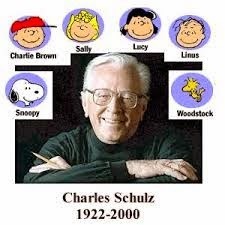
Synopsis
Charles Schulz, born in Minneapolis, Minnesota, on November 26, 1922, launched his comic strip Peanuts in 1950. Featuring hero Charlie Brown, over the years the strip would run in more than 2000 newspapers and in many languages. Peanutsalso expanded into TV specials like the Emmy-winning A Charlie Brown Christmas as well as books and a huge merchandise collection. Schulz died on February 12, 2000.
Cartoonist and creator of the Peanuts comic strip Charles Schulz was born on November 26, 1922, in Minneapolis, Minnesota. Schulz developed an interest in comics early on. As a teenager, he learned the art of cartooning from a correspondence course.
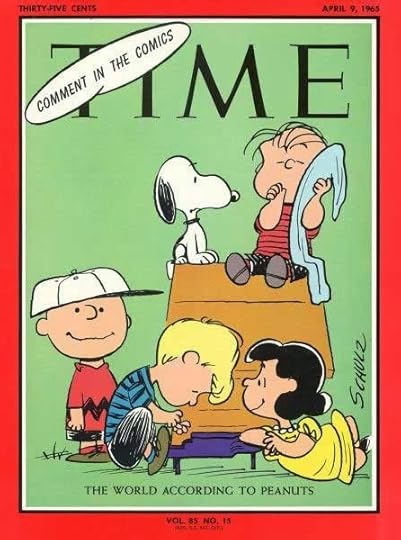
After serving in World War II, Schulz worked as an art instructor and created his first comic strip, Li'l Folks, which was published in a local newspaper. He sold the comic strip to United Feature Syndicate in 1950, and the company retitled it Peanuts.
Peanuts became one of the world's most successful strips, and has been adapted for television and stage. Schulz based the Charlie Brown character on himself and the inspiration for Snoopy came from a childhood pet.

In December 1999, Schulz retired from cartooning, citing health problems. His final daily Peanuts newspaper strip appeared on January 3, 2000, and his Sunday Peanuts strip ran on February 13, 2000. Schulz died at his home the evening before on February 12, 2000 in Santa Rosa, California, from colon cancer.
After his death, Schulz received several honours, including the Congressional Gold Medal from the U.S. Congress in 2001.
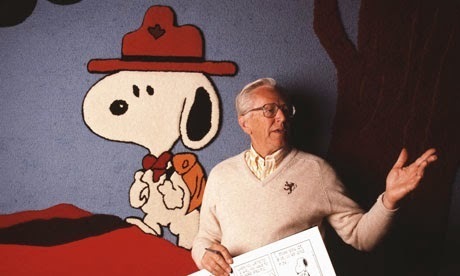




Clancy's comment: I've always loved some of the subtle messages in his cartoons. There is now a museum to honour his work in California.
I'm ...


Published on March 14, 2015 03:06



